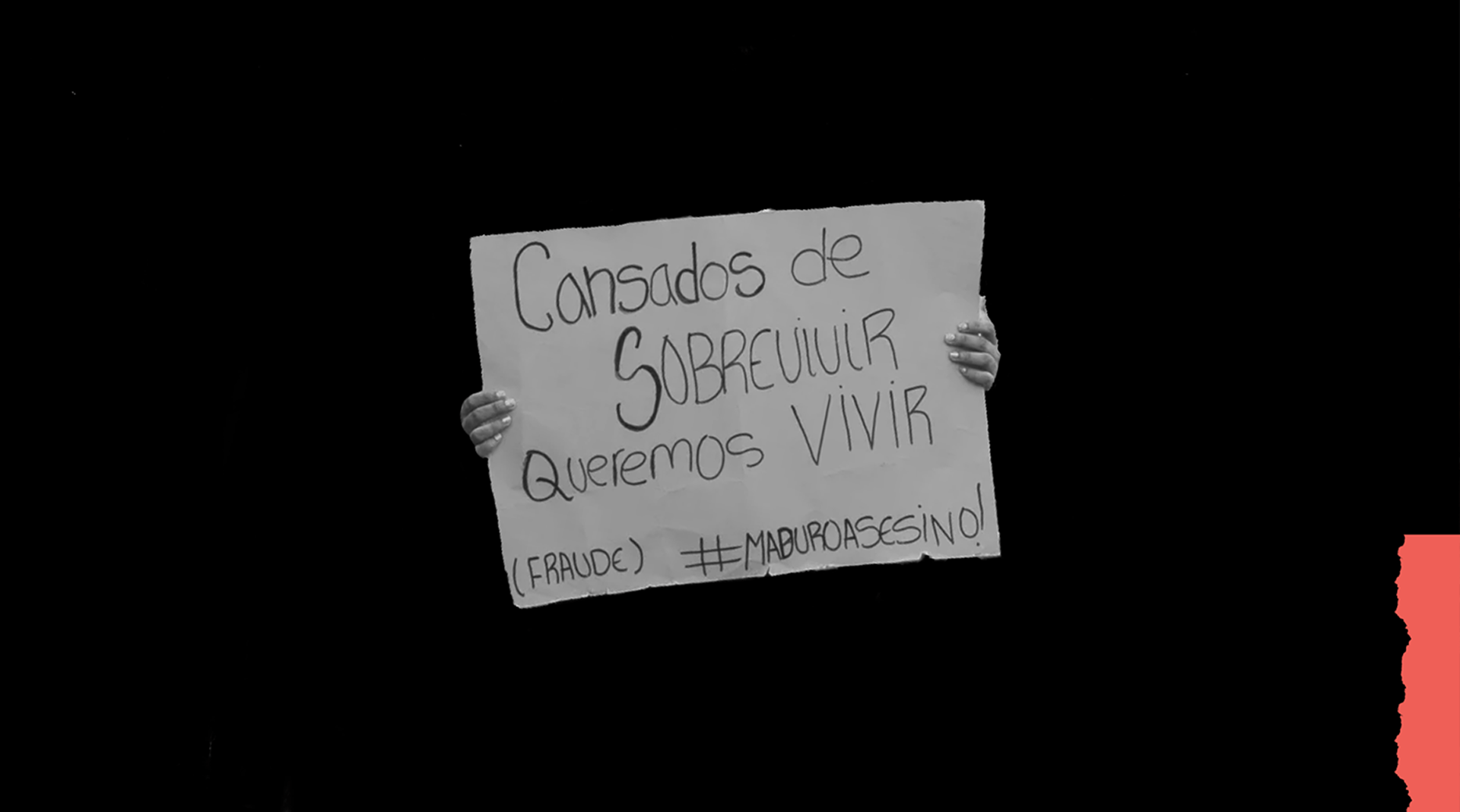
Por: #LaHoradeVenezuela Alliance
This article was originally published in Connectas, as part of the media alliance #LaHoradeVenezuela, which In.Visibles is a part of.
The night of Sunday, July 29th, neighbors of San Blas, in Petare, sang the Venezuelan national anthem as loudly as they could, in the main street right outside the voting center at Colegio Simón Bolívar. While they waited for the results of the elections that would yield a new president, they started celebrating early. It was a party. People danced salsa, vallenato and reggaeton. They knew because of the vote count in each of their voting stations in this part of Petare – the giant slum in Eastern Caracas that this point was a chavismo stronghold – that Edmundo González Urrutia had won in all three electoral centers in the community.
—We won, we won, good God, thank you for the joy of defeating chavismo in Petare—said Mary, 47 years old, a neighbor of San Blas.
Soon after midnight, euphoria turned into shock, after the president of the National Electoral Council, Elvis Amoroso, announced that Nicolás Maduro was the winner with 51.2% of votes, seven points over González Urrutia, that according to this official report, had obtained 44.2%.
In Western Caracas, in Magallanes de Catia, another low income quarter always considered as loyal to chavismo, plentiful in paramilitary colectivos and close to Miraflores Palace, dozens of citizens surrounded the voting center at Escuela Básica Nacional España anxiously waited for the results.
—Maduro: 789, Edmundo: 1720 —a witness read out loud to the crowd.
The excitement was immediate. The party spread up and down the avenue known as La Recta. People jumped, hugged and screamed:
–Freedom, freedom, freedom!–was the chant repeated over and over.
—Catia isn’t chavista anymore—said 52-years-old Mercedes.
Petare y Catia, the city’s poorest poles, became ground zero for the people’s reaction that spread to other poor communities against the electoral results.
Catia isn’t chavista anymore—said 52-years-old Mercedes.
After the official numbers were known, the opposition denounced the lack of transparency bythe electoral authority, and results that don’t match the real percentages obtained in the elections. “There’s a new President Elect and his name is Edmundo González, the whole world knows,” said Maria Corina Machado, after the CNE announcement.
—Nobody believes these results—says Miguel (38 years old), from Barrio Unión in Petare. He thinks, as do many other inhabitants of slums in Caracas, that fraud was perpetrated in the July 28 elections.
Miguel voted at Escuela Bolivariana Julio Calcaño in Barrio Unión, Petare in the Sucre Municipality. According to data on the website built by the opposition to post the voting tallies and show its victory’s evidence, González Urrutia got 1,551 votes (62%), while Maduro got 864 votes (34%) at Miguel’s voting center.
—We’re not dumb, he won by almost double here in Barrio Unión — said Miguel.
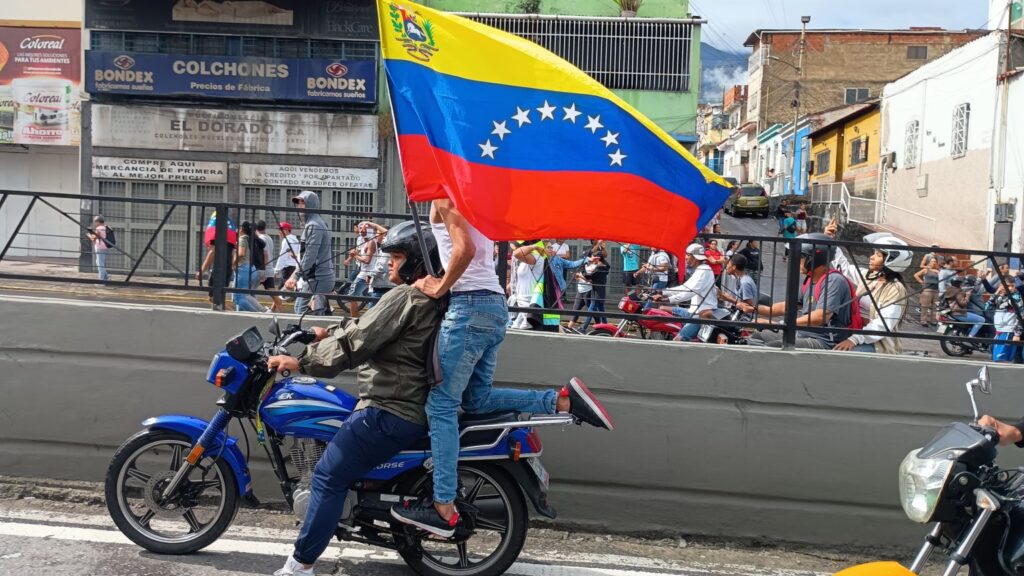
The Petarazo
In the early morning of July 29th, the party turned into outrage. In San Blas and José Felix Ribas, in Petare, as soon as the CNE president spoke, people started banging their pots and pans. There burned tires and trash, and some streets were blocked.
—They yelled fraud, fraud, thieves, the people won’t let you rob them—said Migdalia (28), who lives at José Felix Ribas.
These first protests were shut down by the National Guard.
—We went to bed angry, we know who we voted for—said Migdalia.
In middle-class neighborhoods in Caracas, everything was quiet on Monday morning. The city was desolate, like on holiday. Many felt like they were grieving. But it wasn’t the same in poor sectors.
On Monday, July 29th, at 9:00 a.m, Guillermo (41 years old) was having breakfast with his wife when pots and pans started clattering in different sectors of Petare.
—Even when they came and went, the noise and clatter from people banging on their empty pots started growing at that time.
Then came a flurry of videos from neighbors and friends, via Whatsapp, of people banging on pots in La Dolorita, San Blas, José Felix Ribas, El Carpintero, La Alcabala and Barrio Unión, among other areas.
—I had lunch at noon and they were still at it—says Guillermo, who adds— . The next thing you know, after Maduro was proclaimed by the CNE people started making their way down the hill in Petare. It was the trigger. There were so many that they looked like ants. They came from all sectors, including La Dolorita and Caucagüita.
People gathered by the exit to Palo Verde, near the Petare Roundabout.
—A GNB convoy drove by, but there were so many people and people were so furious that I think the guards got scared, drove around once and then left. I think there were at least 5 thousand people there.
Among the cries of “fraud” that resounded like an arena –according to Guillermo— and the pots and pans, a group of bikers joined the protests, stretching along a full block, and led the crowd towards Western Caracas.
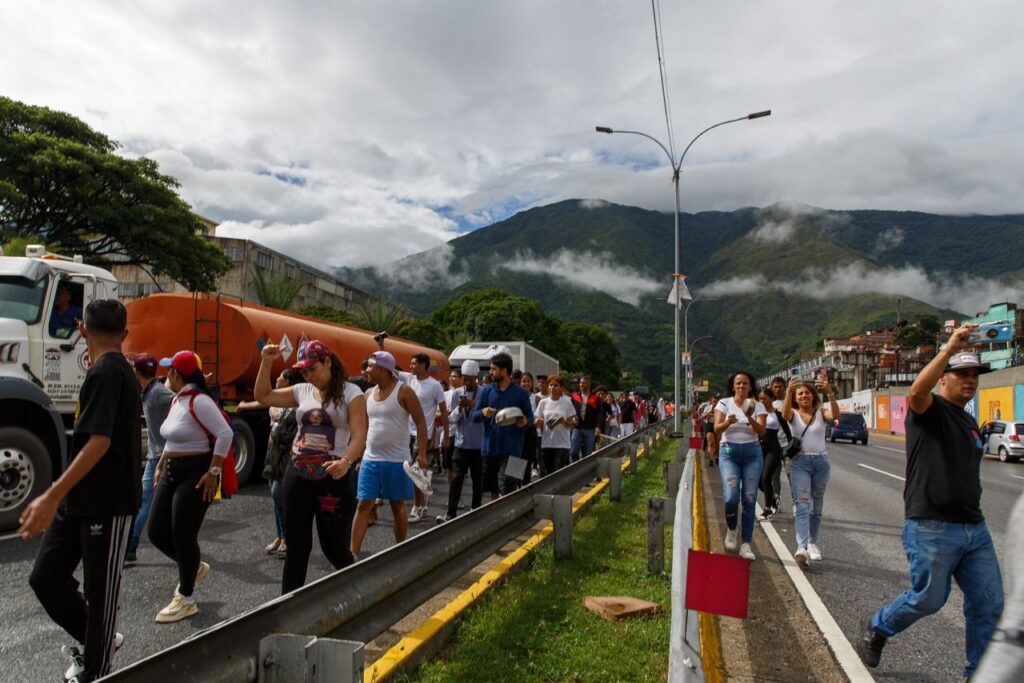
Neighbors from many areas of Petare joined the march: José Felix Ribas, Zona 7, Barrio Unión, Carpintero, Fechas Patrias (three neighboring areas that called 5 de julio, 12 de Octubre and 24 de Julio), Barrio Sucre, Mesuca, La Bombilla, San Blas.
—Oh shit, how is it possible that they stole the election —says Rosa (59 years old).
The march made its way on Francisco de Miranda Av, a straight line from Petare to Chacao, a middle and upper class municipality where the opposition always won. People joined the march as they were at home, wearing sandals and PJs, with their dogs, grandmothers and children.
In La California, they slowed down and invited people from middle-class buildings to join them.
—They said come down here, come down here —Rosa acts out the call with her hands and arms.
They kept going to Los Ruices, then Los Dos Caminos, then walked by Parque del Este, and all the way to Plaza Altamira. Citizens joined in at every stop.
—It was a march of all strata mixed, it didn’t matter if you were sifrino or poor, blond or Black, everybody was connected in the same demand, respecting the will of the people—says Guillermo.
When they got to Los Ruices overpass, everybody saw how large the crowd was.
Many of them were people between 18 and 21 years old, who had never been to a protest. A lot of senior citizens too voted wishing for their relatives’ return from abroad.
—It was amazing, it was the people of Petare expressing themselves, proud of their origins, saying “I’m from Mariche”, others “we’re from La Dolorita”, “San Blas in the house”, some even came from areas as far as Caucagüita and Turumo.
However, after 10 kms, when they got to Centro Lido, in El Rosal, near the Chacaito metro station, the joy of collectively defending the vote, ended. Anti-riot GNB officers awaited. Around 4:00 p.m. on July 29th, the brutal repression began.
Tear gas, rubber pellets and at least 150 detentions was the initial outcome.
—Chavismo represses the poorest folks, qué bolas —sentences Rosa.
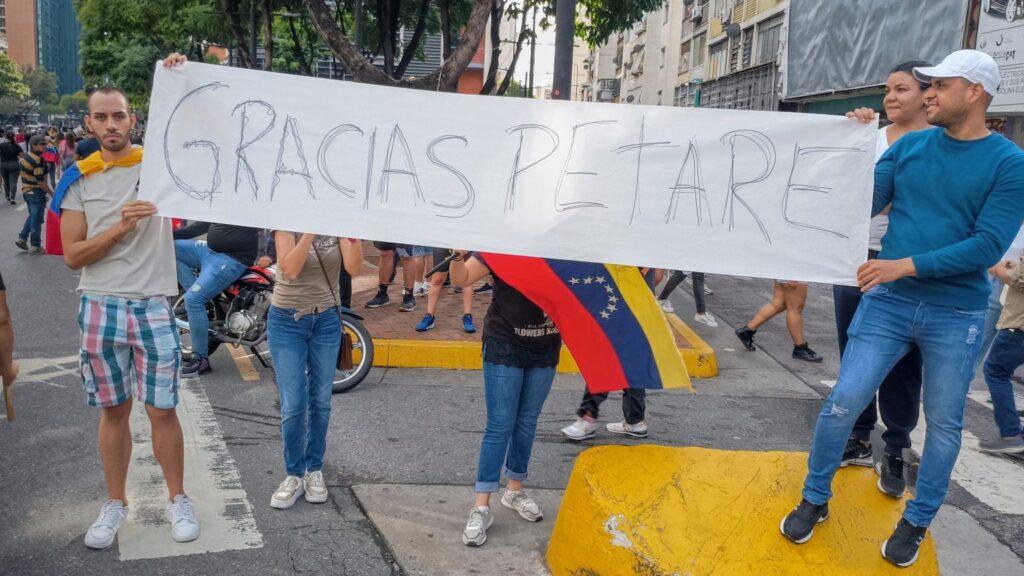
Catia rising
On La Recta Av., in Catia, as in Petare, the bewilderment after the results announced by CNE was unanimous. The party that crowded the street was fast, and joy became a mass surprise that paralyzed people.
—At our center in Catia, González Urrutia won in all five voting stations–-says Mercedes– . They can lie, they can fake, they can believe their own lies, but everybody knows what happened. Even PSUV chavistas from the area, everybody knows who won. That’s why people didn’t put up with it.
—The people deserve respect, damn it, we are not stupid—says Freddy (25 years old).
They burned trash, tires, and closed down the avenue near Los Magallanes Hospital. Catienses protested, yelling “fraud, fraud, fraud,” according to Freddy.
The roar was so loud that on the morning of July 29th, a DAET (Dirección de Acciones Estratégicas y Tácticas) convoy and an anti-riot GNB convoy took over and patrolled the area.
Near there, outside a preschool, the army men left immediately and neighbors took to the streets and protested.
—They knocked down trash cans, blocked the streets and banged their pots. In Gramoven, the opposition won—says Jorge Luis (35 years old), born and raised in this community.
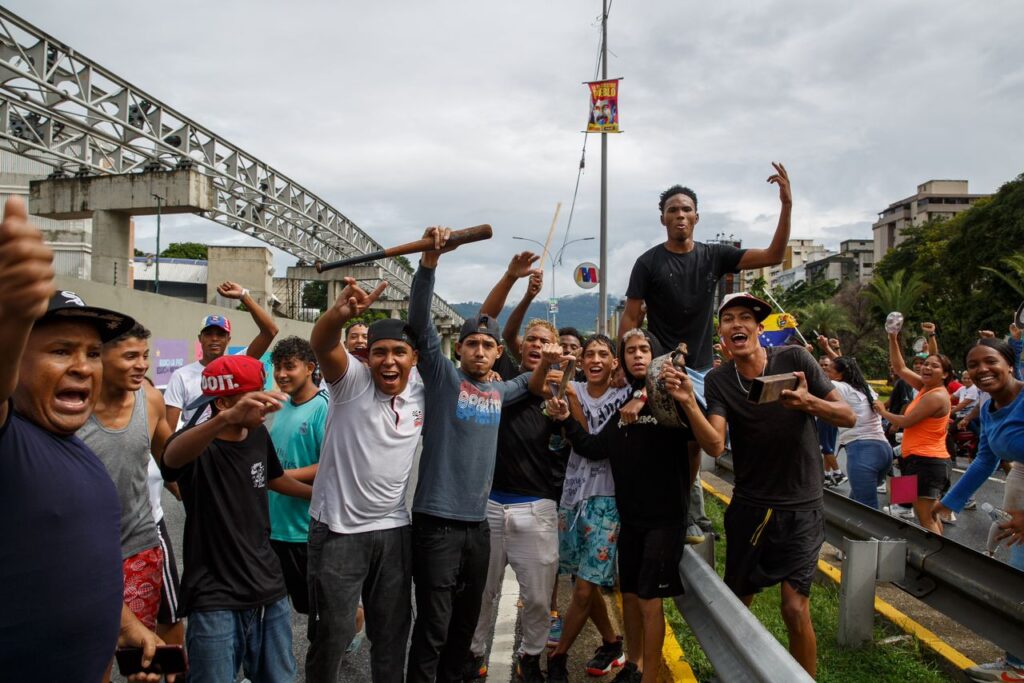
In La Cruz people took to the streets to protest too.
—The youngest were protesting the loudest, they’re sick and tired of this, they want a better life in Venezuela—says Jorge Luis.
In many other parts of Catia like Casalta III, Niño Jesús, Nuevo Horizonte or La Silsa pots and pans were loud in the early hours of July 29th. But, the next day, Catienses took to the streets and gathered at several points, where were violently dispersed by by GNB and PNB.
Ana María (19) lives in La Silsa, and was at her boyfriend’s, Jesús Manuel (20) in Propatria. Both of them saw on TV the morning of July 29th how Maduro was proclaimed President in the headquarters of the Electoral Board.
—I’m enraged, they won’t show the tallies, they won’t do a recount, they are the kings of malandreo, they do whatever they want—says Ana María—. People were yelling to take to the streets, we did and saw everyone getting together, yelling fraud, then they started walking and we went with them.
Like Ana María and José Manuel, people joined from areas like El Cuartel, Propatria, Pérez Bonalde, Nueva Caracas, other sectors of Gramoven and La Cortada.
—It happened naturally –explains Jorman (25), Gramoven neighbor.
The crowd, as it happened in Petare, became a march. They wanted to go to Miraflores Palace, in downtown Caracas. But a convoy of the PNB stopped them using tear gas. But protesters kept marching to Plaza Sucre, where they stormed the PNB module.
In Altavista, Cútira and Ruperto Lugo citizens left their homes to protest too. GNB had to deploy an anti-riot convoy to contain protesters near the Virgen del Carmen Church.
The way to definitively placate and dissuade protesters was with colectivos (paramilitary groups). In Catia, according to reports by protesters, armed men showed up at around 1:00 p.m., on July 29th. The PNB let them through in Plaza Sucre.
Some protesters walked to El Silencio, in downtown Caracas, closer to Miraflores, and crashed with the security forces.
—I went because it’s unfair that they cheat, that we’re not even allowed to demand answers, which is our right. I want change, I want my future in Venezuela–says Luis Miguel (19 years old), Altavista neighbor and the only one of four brothers who hasn’t left the country.
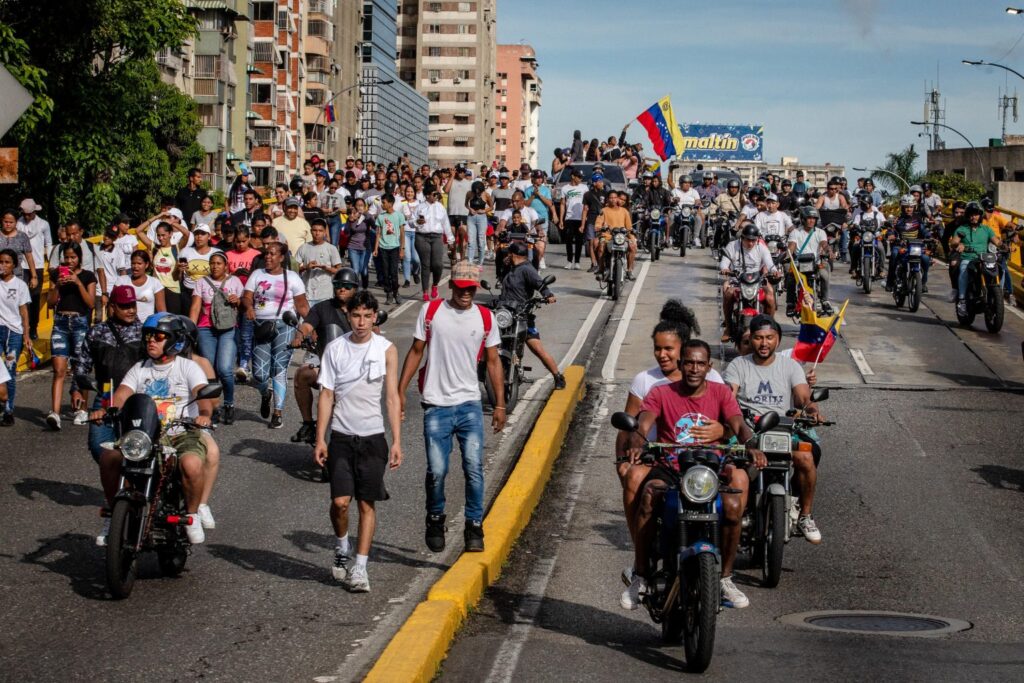
Snowball Effect
There were reports of even more forceful protests on Monday 29th, Tuesday 30th and Wednesday 31st. On Thursday, August 1st and Friday the 2nd, before being quenched by mass detentions. According to the Observatorio Venezolano de Conflictividad Social, until July 31st, there had been 564 protests in Venezuela, and at least 82 in low income neighborhoods in the capital like San Martín, Artigas, Capuchinos, El Guarataro, Los Eucaliptos, La Vega, Santa Rosalía, Santa Teresa, La Candelaria, San José, Cotiza, La Pastora, Lídice, El Cementerio, Coche, El Valle, Pinto Salinas, Sarría, Avenida Andrés Bello, Antímano, Carapita, Mamera, Macarao, Caricuao, Catia, Gramoven, Los Magallanes, La Silsa, El Limón, La Cruz, in addition to more than 20 sectors of Petare.
The main reason for protesting, according to the study by OVCS, is to denounce the fraud, demand transparency and challenge the CNE to show the tallies.

After more than five days of protests in Caracas and the main cities in Venezuela, human rights organization Foro Penal registered 891 arbitrary detentions, 89 of which are teenagers, mostly from poor and vulnerable sectors. Monitor de Víctimas has confirmed that 20 people have been killed in the context of protests, and in 11 cases, the victimizer has been a member of colectivos, police or National Guard.
The voice of popular areas makes evident that chavismo’s social base has not only vanished: it became a source of resistance.
Such is the case of neighbors of El Limón slum, on the sides of the Caracas-La Guaira highway, many of them left their homes on the 29th and to the road that connects Caracas to Maiquetía International Airport.
—On the 29th, we were on the footbridge. They sent the Vargas GNB and they tear-gassed us without warning, but neighbors of La Cruz sector helped us and threw stones at them. All we want is for our vote to be respected. The people spoke–says Maricarmen, once a chavista, now a dissident.